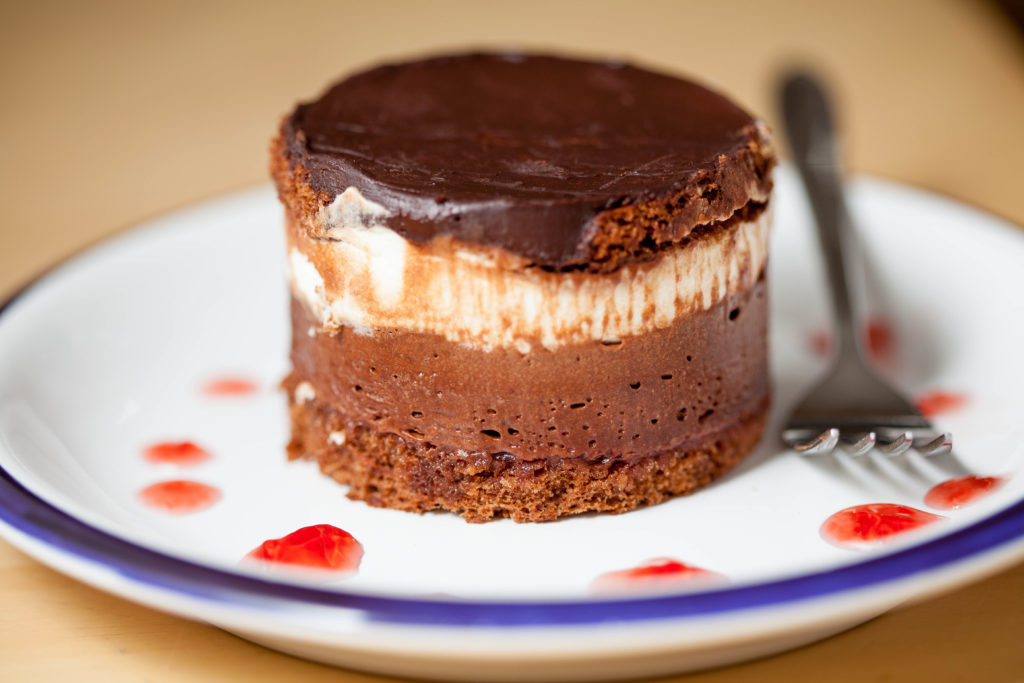
The best cake in the world – but how do we reproduce it without a recipe? Photo by Stefan Klopp / CC BY
A good cake can be unforgettable and can lead to massive cravings. In the same way, it is very fulfilling to solve a scientific problem and we will be craving the next one. But how can we satisfy our cravings if we do not have the recipe for our desired cake? Or if the solution to our scientific problem does not exist?
Like many natural processes in science, baking a cake is an irreversible process; once the ingredients are mixed up and baked, there is no going back. We cannot disentangle and separate the various ingredients from each other. But perhaps there is still a way to make an educated guess of the recipe? And perhaps the same approach could apply to other situations where we ideally want to reverse an irreversible process.
In science we often want to reverse an irreversible process. For example, order to explain the present landscape, we need to understand what happened to this landscape in the past. We understand quite well how a river will cut into a landscape depending on the steepness of the river channel and the river discharge. We can therefore simulate these processes using a number of equations and predict how the landscape evolves in the future. But to determine how a river cut into the landscape in the past, we need to know the discharge and the steepness of this past landscape. This we cannot know, without knowing how the landscape has evolved since. We cannot simply unbake a cake and we cannot simply solve the equations for river erosion back in time.
Instead, we can simply bake a lot of cakes. Meaning that we let our scientific models calculate forward in time using different sets of model conditions. We will then need to “guess” these conditions (or ingredients) – for instance whether our cake contains chocolate or eggs, or what our landscape looked like in the past. Just as we probably have an idea about the cake ingredients, we can also make an educated guess about the conditions for our models. The strategy is then to run enough models, or bake enough cakes, to justify that we have in fact tested “all” possible combinations of the unknown model parameters (ingredients) within realistic ranges. It is a long and tedious process to bake all these cakes. So how do we decide when we are satisfied with the recipe, so we can stop baking and start eating?
In order to know when we have the right recipe, we need objective measures to distinguish between the different cakes we have baked or the landscapes we have modeled. We need to know how close these are to the “truth”. To distinguish between cakes, we can use flavor, texture, or color. To distinguish between evolving landscapes, we can use steepness or curvature of the final landscape. Using these measures, we can quantify how well our different cakes resemble our favorite, and how well our models match the present landscape. However, there is in fact no guarantee that we end up with a single recipe or a single set of model parameters that match our objective measures uniquely. Maybe we end up with a range of recipes for our favorite cake, or a range of conditions that give our present landscape. But this is also an important result. It tells us how essential each ingredient is for the flavor if the cake.
By using this strategy for guessing ingredients, we can in principle “unbake a cake” – or at least disentangle a likely recipe so we can bake more cakes later. However, the procedure is very laborious. You need efficient baking skills and a big oven where you can bake several cakes at the same time. In science we need theoretical skills to formulate our scientific problem (forward model), a computer big enough to run a lot of models, and observations that allow us to distinguish between the different models. In this way, we can “reverse” irreversible processes in science.
Bon appétit!







